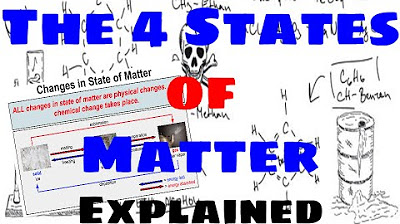What is plasma?
Summary
TLDRThe video script explores the fascinating world of plasma, the fourth state of matter, highlighting its ubiquity in the universe and its crucial role in energy production, such as in the sun. It underscores the importance of plasma in various industries, including microchips and agriculture, and emphasizes its potential in fusion energy as a sustainable power source. The Princeton Plasma Physics Laboratory's 70 years of expertise is showcased, illustrating the ongoing research and development in plasma physics for the benefit of humanity and technology advancement.
Takeaways
- 🔥 The script introduces the four states of matter, with plasma being the fourth, distinct from solid, liquid, and gas.
- 🌡️ Heating a substance can change its state of matter, from solid to liquid, then to gas, and finally to plasma when electrons are freed from atoms.
- 🌌 Plasma is prevalent in the universe, making up more than 99% of the visible universe, including stars like our sun.
- ⚡ Plasma's electrical nature allows for manipulation using electricity and magnetism, opening up various applications.
- 🌟 Plasma is crucial in technology, particularly in the microchip industry for creating nanoscale wires and connections.
- 🌱 Plasma technology is being explored in agriculture, medical applications, quantum information science, and sustainability.
- 🔬 The Princeton Plasma Physics Laboratory, a Department of Energy National Lab, is at the forefront of plasma research and development.
- 🏛️ The lab is run by Princeton University and benefits from its resources, contributing to cutting-edge plasma research.
- 💡 Daily advancements in plasma understanding are being made, with implications for a wide range of technologies.
- 🌐 The script envisions a future where plasma's integration into society is commonplace, enhancing efficiency and technological advancement.
- 🌍 The work at the Princeton Plasma Physics Laboratory aims to benefit not only the US but also humanity by developing new technologies and solutions.
Q & A
What are the four states of matter mentioned in the script?
-The four states of matter mentioned are solid, liquid, gas, and plasma.
What happens to the atoms when you heat up a solid until it turns into a plasma?
-As you heat a solid, the atoms become less connected, and when it turns into plasma, the atoms lose their electrons, resulting in an electrified gas.
What percentage of the visible universe is composed of plasma?
-More than 99% of the visible universe is made out of plasma.
Why is the sun described as a giant ball of plasma?
-The sun is described as a giant ball of plasma because it is primarily composed of this state of matter, which is responsible for the energy that reaches Earth.
What natural phenomena are mentioned as examples of plasma?
-Auroras and lightning are mentioned as natural phenomena that are examples of plasma.
How can plasmas be engineered for various applications?
-Plasmas can be engineered due to their electrified nature, allowing us to use electricity and magnetism to direct and accelerate them for various applications.
In what industry are plasmas commonly used?
-Plasmas are commonly used in the microchip industry for processes such as laying down nanoscale wires and connections across computer chips.
What are some other fields where plasmas are being utilized?
-Plasmas are being utilized in agriculture, medical applications, quantum information science, and sustainability.
What is the significance of understanding plasmas for the development of fusion energy?
-Understanding plasmas is crucial for the development of fusion energy as fusion reactions need to occur within plasma, and this knowledge helps in tackling the associated challenges.
Which laboratory is dedicated to tackling the world's biggest science and technology challenges with plasma expertise?
-The Princeton Plasma Physics Laboratory is dedicated to tackling these challenges with over 70 years of plasma expertise.
How is the Princeton Plasma Physics Laboratory related to Princeton University?
-The Princeton Plasma Physics Laboratory is a Department of Energy National Lab run by the US government, funded by the US government, and contracted by Princeton University, giving it access to Princeton's resources.
Outlines

هذا القسم متوفر فقط للمشتركين. يرجى الترقية للوصول إلى هذه الميزة.
قم بالترقية الآنMindmap

هذا القسم متوفر فقط للمشتركين. يرجى الترقية للوصول إلى هذه الميزة.
قم بالترقية الآنKeywords

هذا القسم متوفر فقط للمشتركين. يرجى الترقية للوصول إلى هذه الميزة.
قم بالترقية الآنHighlights

هذا القسم متوفر فقط للمشتركين. يرجى الترقية للوصول إلى هذه الميزة.
قم بالترقية الآنTranscripts

هذا القسم متوفر فقط للمشتركين. يرجى الترقية للوصول إلى هذه الميزة.
قم بالترقية الآن5.0 / 5 (0 votes)






